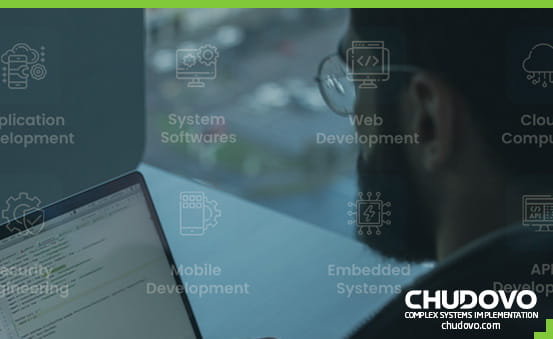7 Amazing Web Portal Examples – Top 2023
Web portals are the backbone of many organizations’ communication systems with their employees, suppliers, and communities. While they can use social media or email services to do this, these other technologies and solutions may not be as effective as creating a web portal for that specific purpose.
In this article, we’ll answer the question of “what is a web portal?” and the types of web portals available for various industries. We’ll also provide examples of some of the best web portals.
Table of Content
What Are Web Portals?
Web portals are internet or cloud platforms that give specific audiences access to different information from an organization. Examples of web portals are academic institution portals, vendor portals, government portals, and many others.
Some people confuse web portals for websites. But web portals can be a part of a website, but they aren’t publicly accessible web pages made for a general audience. Web portals provide personalized content for registered users and facilitate communication between the users and the organizations.
Types of Web Portals
Web portals come in different forms. Some serve businesses, others are run by government agencies, and some by academic institutions. Here are six types of web portals explained below:
- Partner and extranet portals
- Banking and insurance portals
- Student and faculty portals
- Government agency portals
- Vendor portals
- Intranet portals
1. Partner and Extranet Portals
Partner and Extranet portals both serve the similar purpose of increasing brand loyalty. While partner web portals are created to facilitate collaboration with their business partners, the extranet web portals give access to suppliers, partners, and customers.
2. Banking and Insurance Portals
Insurance portals ease account management activities such as credit negotiation, debts, receiving quotes, personal record recovery, and payment procedures. And banking web portals allow users and customers to create bank accounts, manage and track their finances, and pay bills.
3. Student and Faculty Portals
Web portals for universities and other academic institutions provide information to community members. The standard features usually include access to grades, class notes and resources, enrollments, financial transactions, etc.
4. Government Agency Portals
Government-owned portals help the government to communicate and interact more easily with their citizens, parastatals, and businesses operating in the country. Some governments prefer to integrate these web portals into their website for a more seamless process.
5. Patient Portals
Patient portals are used in telehealth to ensure seamless communication between medical professionals and their patients. It includes features for booking appointments, viewing test results, viewing growth charts, and other medical care information.
Some portals also feature information about healthcare facilities and their specialties within the visitor’s location. The portal may also display information regarding various illnesses for visitor education.
6. Vendor Portals
Large businesses use vendor portals to efficiently manage their vendors by streamlining communication channels with numerous suppliers, simplifying the onboarding and order placement procedures.
7. Intranet
An Intranet web portal is for communication and collaboration between staff within a particular organization. Outside entities are restricted from gaining access to these intranet portals as they do not belong to the employee network within the organization.
Intranet web portals are often used to distribute sensitive information, provide work tools to boost employee efficiency, and provide training materials and project documentation. The organization can also add features to boost collaboration.
Why use a Web Portal?
Organizations use web portals to streamline processes and facilitate faster organizational growth. Other reasons for using a web portal include the following:
- Personalized experience for users
- Provide targeted content
- Boost employee and member collaboration
- Eliminate redundancy in communication
- Faster delivery and tracking of personalized information
7 Best Web Portal Examples
Not many web portals excel at their functions. If you want to build a robust web portal for your organization, check out this example of web portals list and their features:
1. Santander Bank – Retail Banking Portal
Santander Bank is one of the largest banks in Europe, and it built an enterprise web portal that consolidates its existing platform. It included new features in addition to the product catalog, CMS, and search engine.
Some of the features of the Santander Bank portal include:
- Personal finance management: It features savings goals, personal budget settings, and money management features.
- Card and account management: Features credit card and customer account information.
- Financial transactions: Customers can perform financial transactions via the web portal
- 24/7 Support: Users can use the automated chatbot to sort out problems at any time
2. Forest Hills Pediatrics – Patient Portal
The Forest Hills Pediatrics patient web portal is a telehealth product that allows medical professionals to serve their patients faster. Via the portal, patients can request appointments and medication refills, fill out a check-up survey to improve service, and print out immunization records. There’s also a section where patients can access general information and FAQs for numerous conditions.
Some Forest Hills Pediatric portal features are:
- Administration: Users can modify their patient contact and health data.
- Insurance and payment management: This feature includes data on medical bills, online payment options, and cases for insurance coverage.
- Doctor-patient communication: Patients and their doctors can communicate via after-visit surveys, video consultations, and a chat feature.
- Patient access to health data: Patients can log in securely and view their medical history, medication plan, procedures, treatments, discharge summaries, and lab results.
- Appointment management: This feature facilitates appointment scheduling and automated reminders.
3. York University – Student and Faculty Portal
The York University student and faculty portal is a platform that scales the educational process and experience. It provides access to external data and internal resources for students and faculty.
The York University web portal includes features such as:
- Information: Easily disseminate personalized and general information to all students and faculty
- Personal course information: Each student has access to their course website, class times, and instructor information.
- Personal calendars: Access to class schedules and locations for classes and leeway to include other campus events in the calendar
- Grading: Faculty can record students’ grades and make them visible for students to access at will.
4. AutoZone – Employee Portal
AutoZone is the largest distributor and source of automotive parts and spare parts in sub-Saharan Africa. Daily Online Communications (DOC) is AutoZone’s employee portal serving over 47,000 employees and delivering information on training, benefits, weekly tasks, and personal course information.
The following are features of the AutoZone employee portal:
- Company news and announcements: This section contains all announcements and news about the company.
- Benefits and entitlements: Employees can see information about their annual leave, retirement plan, insurance, incentives, and benefits.
- Recruitment process and job description: Displays information about vacancies, organizational charts, performance reviews, and salaries.
- Company procedures and policies: Shows information on diversity policies, the procedure for resolving grievances, social media policies, handbooks, and company values that guide all employees.
- Onboarding: The section where new employees receive information about the onboarding process and other information from HR that’ll help them integrate easier.
5. Grants.gov – Government Portal
Grants.gov is a government-owned web portal where individuals can apply for federal government grants. Users can manage the grants they’ve applied for in a simplified way.
Some features of the Grants.gov web portal include:
- Compliance: The portal is WCAG and ADA compliant.
- Events Calendar: Users can stay in the loop concerning upcoming meetings and events
- Contact information: In case of an emergency, residents can reach the agency with the provided contact phone numbers.
- Agency blog and social media integration: The portal’s blog and social media integration help quickly disseminate information and facilitate community interaction.
- Search function: Every page has a search bar that users can use to find anything.
6. Allianz Wealth Management – Financial Portal
Allianz Wealth Management is a leading global investment group that helps individuals manage their wealth through a range of diversified and secure investments. Customers can use the Allianz Wealth Management web portal to obtain historical data on financial services and products they purchased.
In addition, the portal has features that facilitate account management and policy payments. Other features include:
- Portfolio management: An internal tool that enables users to manage their portfolio
- Intuitive design: A user interface that makes it easy for customers to navigate
- Consumer investment tools: a range of features that cover policy payments, investment profit expectancy dates, and investment descriptions.
- Data security: The web portal provides security against intrusion and interruption threats to user data
- 24/7 automated chatbot support
7. Stanford University Student and Faculty Portal – Education Portal
Stanford University has a student and faculty web portal that is an academic essential. It’s a secured UX-centered web portal where students, faculty, and other associated individuals can register, record and receive essential information.

Certified engineers
Convenient rates
Fast start
Profitable conditions
Agreement with
EU company
English and German
speaking engineers
Features of the Stanford education portal include:
- Faster education delivery: Students and staff can access exclusive course materials from any device and location. Faculty can also monitor student performances.
- Access to resources: Parents, admin, students, and faculty can get access to resources pertaining to the social and academic aspects of the university.
- Exam Assessment: Students can create personal accounts with their student ID and write exams and participate in tests online, and access results from the portal.
- Forums: It features online forums and Communities for users to provide support and foster community discussions.
Conclusion
Web portals are tools that universities, government agencies, and businesses use to boost growth and brand loyalty. The types of web portals vary by use case, including for vendors, academic students, faculty, government agencies, etc. If you want to start web development plans for your organization, keep in mind what type of operations you conduct and the users you’re building it for.




